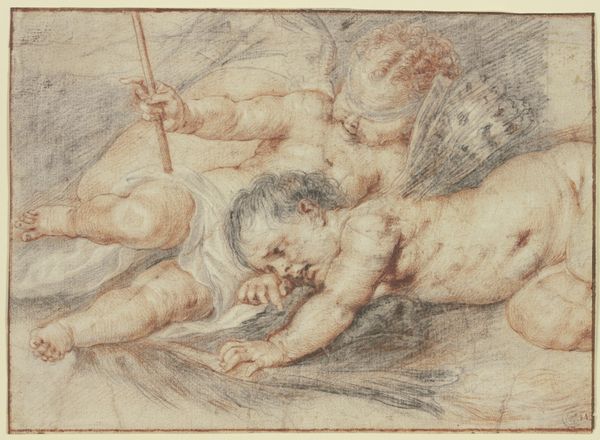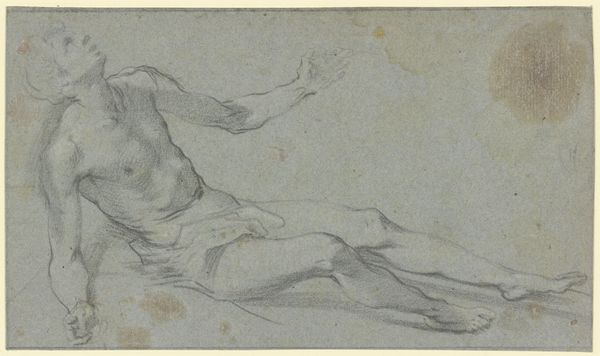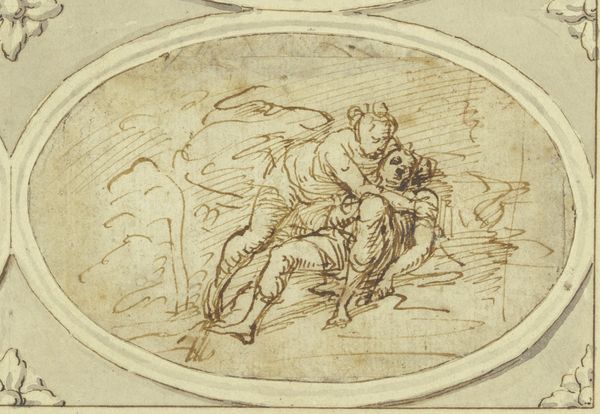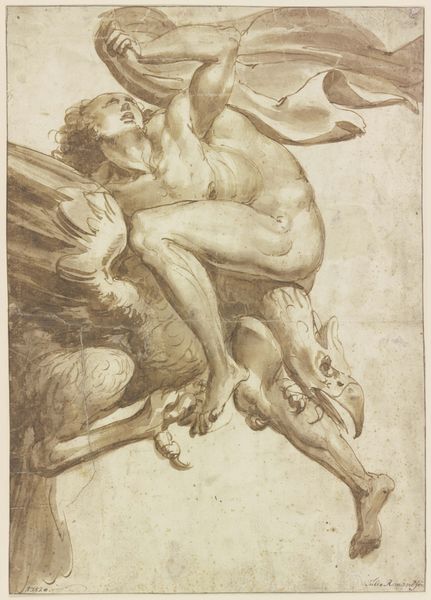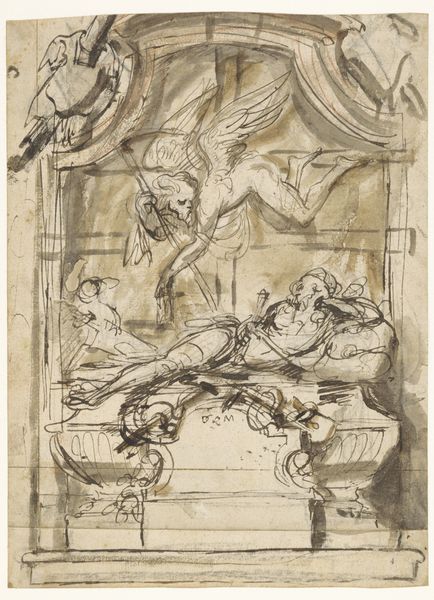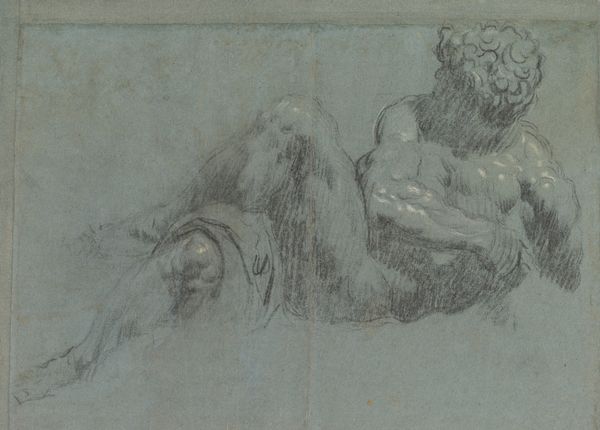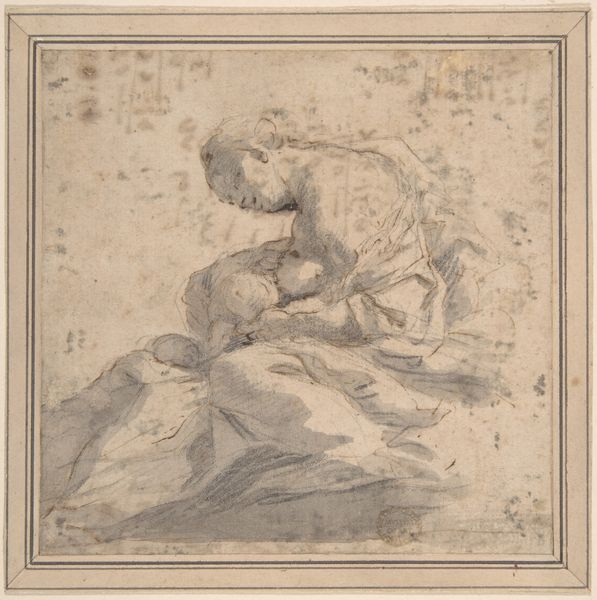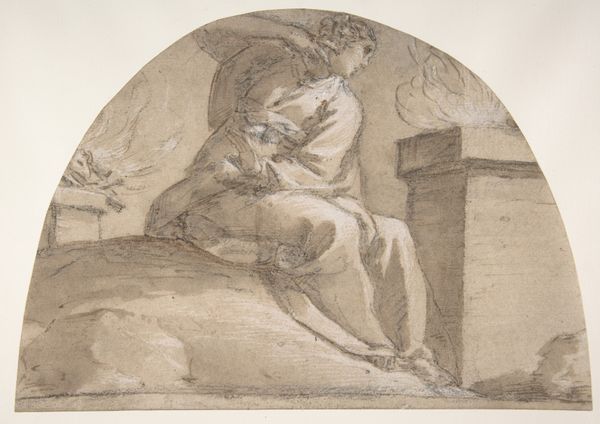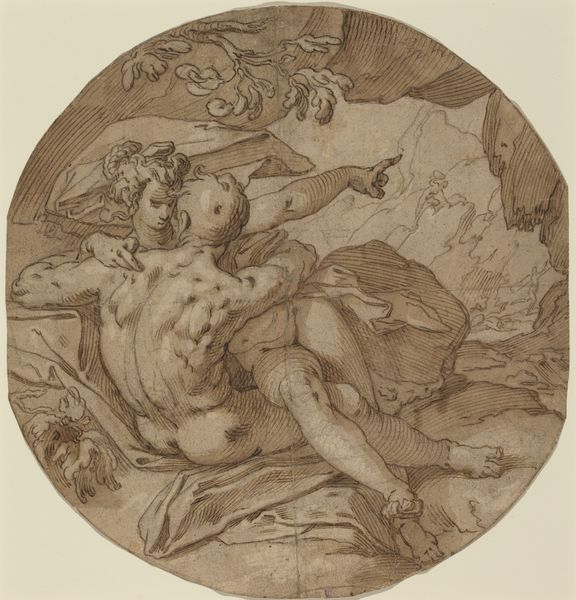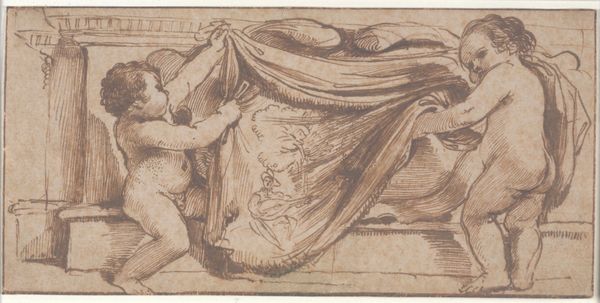
drawing, ink
#
drawing
#
allegory
#
charcoal drawing
#
mannerism
#
figuration
#
11_renaissance
#
ink
#
nude
Copyright: Public Domain
Curator: Oh, this evokes such a whirlwind of myth and artistic strategy! What are your first thoughts? Editor: Fleeting. The whole thing looks… wispy, like a dream fading as soon as you try to grasp it. All sepia tones and blurred edges. Is that an eagle hauling away a bewildered cherub? Curator: In a way, yes. Here we have "The Abduction of Ganymede" a drawing, likely ink and charcoal, by Cherubino Alberti. The piece renders the classical myth wherein Zeus, disguised as an eagle, carries off the young Ganymede to Mount Olympus to be his cupbearer. Editor: Cupbearer… talk about divine intervention leading to a serious career change. I can't help but wonder what Ganymede was thinking. The blurring almost makes it seem like he's not fighting back—resigned to his fate, maybe? Curator: Consider how Alberti used Mannerist techniques. Note the contorted poses, almost theatrical. This deliberate stylization shifts our focus. Rather than lamenting abduction, the form becomes a study in elegance and controlled dynamism. Ganymede's limbs, though caught mid-flight, have a graceful, almost dance-like quality. Editor: Okay, I see it now! The angel’s elongated torso… like it's stretching toward the heavens! Is it still slightly sinister? Like something between love and taking someone hostage. Also, oval frame; maybe he's a character of one of those baroque frescoes in a Roman palace. Curator: Precisely! The oval format and the mythological subject matter suggest its potential use as a decorative study or model for a larger composition, perhaps a fresco, as you mentioned. The lack of background detail encourages viewers to consider the formal elements - the interplay of light and shadow, the curvilinear forms. The lack of precise dating opens many perspectives, so its aesthetic force remains active through time. Editor: Time, perspective... looking at it again, the way Alberti used light is what makes it float, that shading around the Eagle that suggests flight. Not just bodies in motion, but *emotion* as well, an ascension in plain sight. It goes beyond classical imitation. Thank you, Alberti! Curator: An astute observation! Ultimately, it’s this synthesis of classical subject matter and stylized form that makes this a compelling piece, leaving us to interpret, and perhaps reinterpret, the emotional complexities beneath the surface.
Comments
No comments
Be the first to comment and join the conversation on the ultimate creative platform.

